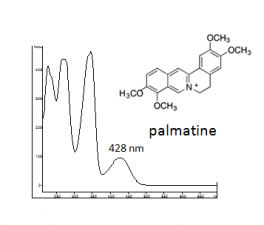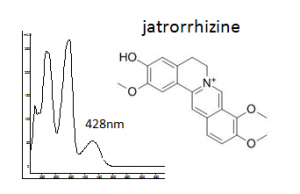PEM E79076, embroidered silk shawl, China (19th century)
Artifact Information
Pale yellow Chinese embroidered silk shawl. Early to mid-19th century. Imported from Guangzhou, China. Chinese crepe shawls such as this, with a ground of "bird-of-Paradise yellow" or "stem yellow" on which cordons of flowers are embroidered are mentioned in 1828 in the Ladies' Monthly Museum of London as "elegant novelties in fashion"[1].
The Peabody Essex Museum in Salem, MA USA. E49250.
Summary of results
The major components of the plant are protoberberine alkaloids: palmatine and jatrorrhzine. No berberine was detected. The dyeing source was probably huangteng. [2]
HPLC profile
Identified compounds
| Compound | RT (min.) | MW | UV/vis | Other |
|---|---|---|---|---|
| palmatine | 37.1 | 351 | 348,428 | major component |
| jatrorrhizine | 34.4 | 337 | 348,428 |
References
[1] Worth, S.(1986) "Embroidered China crepe shawls: 1816-1863; Dress 12:43-54.
[2] Xian Zhang,Karina Corrigan, Bruce MacLaren, Mimi Leveque, and Richard A. Laursen, Characterization of Yellow Dyes in Nineteenth Century Chinese Textiles. Studies in Conservation 52, 211-220 (2007).



